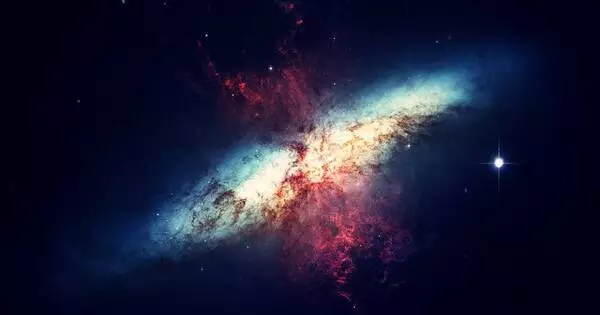A team of astronomers used the European Southern Observatory’s Very Large Telescope (VLT) to observe a new type of stellar explosion known as a micronova. These outbursts occur on the surface of certain stars and can each consume 3.5 billion Great Pyramids of Giza worth of stellar material in a matter of hours.
“We have discovered and identified what we are calling a micronova for the first time,” says Simone Scaringi, an astronomer at Durham University in the United Kingdom who led the study on these explosions, which was published today in Nature. “The occurrence calls into question our understanding of how thermonuclear explosions in stars occur. We thought we knew, but this discovery suggests a completely new way to achieve them” he adds.
Micronovae are extremely powerful events, but they are small on astronomical scales; they are much less energetic than novae, which are stellar explosions known to astronomers for centuries. Both types of explosions occur on white dwarfs, which are dead stars with masses similar to our Sun but as small as Earth.
If two stars in a two-star system are close enough together, a white dwarf can steal material, mostly hydrogen, from its companion star. As this gas falls to the very hot surface of the white dwarf star, it causes the hydrogen atoms to fuse explosively into helium. These thermonuclear explosions occur across the entire stellar surface in novae. “Such detonations cause the entire surface of the white dwarf to burn and shine brightly for several weeks,” astronomer Nathalie Degenaar of the University of Amsterdam in the Netherlands explains.
We discovered that all of these optical flashes were produced by white dwarfs with the help of ESO’s Very Large Telescope. This observation was critical in interpreting our result and in identifying micronovae.
Simone Scaringi
Micronovae are similar explosions that are smaller in scale and faster, lasting just several hours. They occur on some white dwarfs with strong magnetic fields, which funnel material towards the star’s magnetic poles. “For the first time, we have now seen that hydrogen fusion can also happen in a localised way. The hydrogen fuel can be contained at the base of the magnetic poles of some white dwarfs, so that fusion only happens at these magnetic poles,” says Paul Groot, an astronomer at Radboud University in the Netherlands and co-author of the study.
“This results in the detonation of micro-fusion bombs, which have about one millionth the strength of a nova explosion, hence the name micronova,” Groot continues. Although the term “micro” implies that these events are small, they are not. Just one of these outbursts can burn through approximately 20,000,000 trillion kg of material, or approximately 3.5 billion Great Pyramids of Giza.

These new micronovae raise questions about astronomers’ understanding of stellar explosions and may be more common than previously thought. “It simply demonstrates how dynamic the Universe is. These events may be quite common, but because they happen so quickly, they are difficult to capture in action” Scaringi elaborates.
The mysterious micro-explosions were discovered while analyzing data from NASA’s Transiting Exoplanet Survey Satellite (TESS). “We discovered something unusual while looking through astronomical data collected by NASA’s TESS: a bright flash of optical light that lasted a few hours. We discovered several similar signals as we searched further “Degenaar explains.
The team used TESS to observe three micronovae: two were from known white dwarfs, but the third required additional observations with the ESO’s VLT’s X-shooter instrument to confirm its white dwarf status.
Supernovae are frequently observed in other galaxies. However, supernovas are difficult to see in our own Milky Way galaxy due to dust. Johannes Kepler discovered the last observed supernova in the Milky Way in 1604. The remains of a more recent supernova were discovered by NASA’s Chandra telescope. It exploded in the Milky Way over a century ago.
“We discovered that all of these optical flashes were produced by white dwarfs with the help of ESO’s Very Large Telescope,” Degenaar says. “This observation was critical in interpreting our result and in identifying micronovae,” Scaringi adds.
The discovery of micronovae expands the repertoire of known stellar explosions. The team now wants to capture more of these elusive events, which will necessitate large-scale surveys and quick follow-up measurements. “Rapid response from telescopes such as the VLT or ESO’s New Technology Telescope, as well as the suite of available instruments, will allow us to unravel in greater detail what these mysterious micronovae are,” Scaringi concludes.





